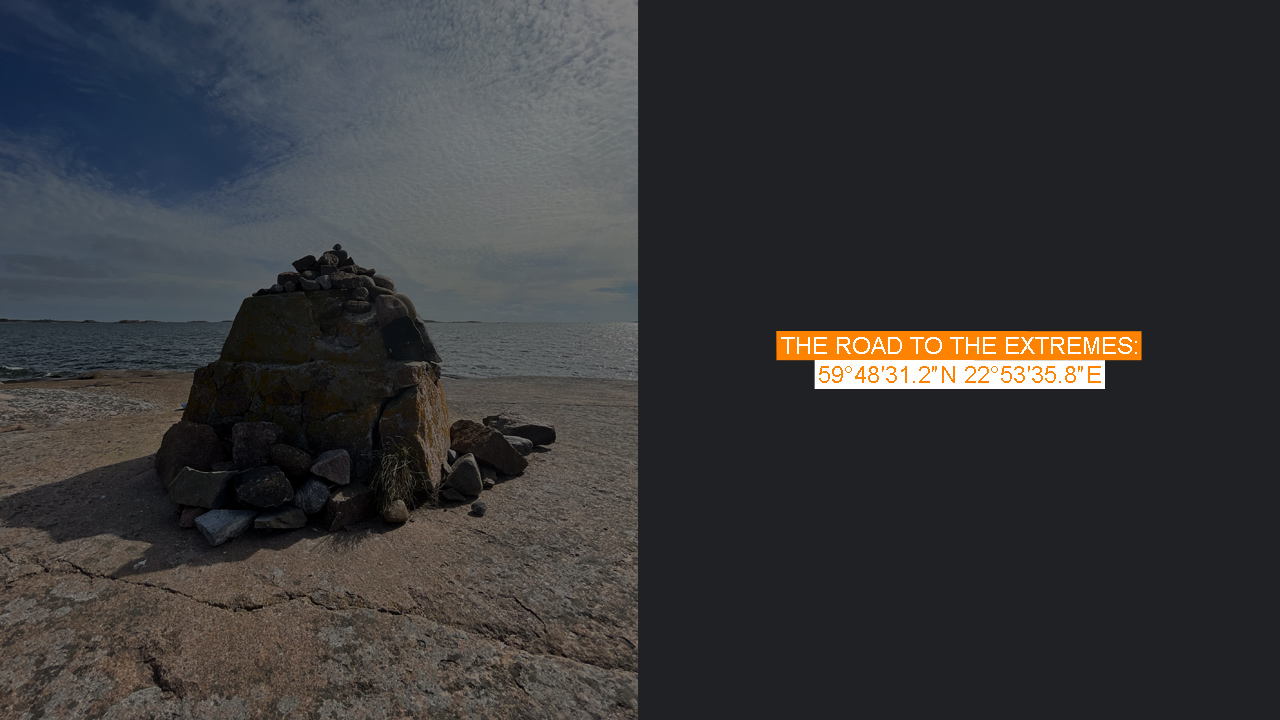It’s early August. Summer is still in full swing, but the first subtle signs that it won’t last forever are beginning to show. The days are getting shorter, and the mornings, evenings, and nights have started to cool slightly. Yet today is perfect. A gentle breeze, barely noticeable on any other day, adds a touch of freshness to the air. And, of course, it’s the weekend of the Poker Run in Hanko.
While the Hanko Regatta—the iconic sailing event—is one of Finland’s most cherished summer traditions, especially among sailing enthusiasts, my heart has always belonged to the Poker Run. High-speed boats race from checkpoint to checkpoint, collecting cards along the way to complete a hand. The best hand wins. There’s something mesmerizing about the roar of V8 engines and the thrill of boats slicing through the water at high speed. Not to mention, the boats themselves are like works of art.
But the Poker Run is more than just about the boats—it’s a celebration of summer, a time for partying and networking. I still remember the wild days when Kimi Räikkönen showed up dressed as a gorilla, adding an extra dose of spectacle to the weekend.
Without a doubt, the highlight of the weekend is the countdown to the start of the engines, followed by the concert that kicks off the event. But in recent years, the atmosphere has shifted. After a tragic accident in 2020, the event hasn’t drawn the same crowds it once did. Environmental concerns and broader shifts in society have also led many boat owners to prefer more low-key Poker Run events—or to simply enjoy the thrill on their own, away from the crowds.
That being said, it would be misleading to claim that the Poker Run isn’t the primary reason we’re in Hanko. But there’s another secret mission: a visit to Finland’s southernmost point, located on a peninsula in Hanko. The best part is that we can combine both adventures—if we can reach the southern tip before the speedboats head back from their route.
The walk to the southernmost point is about 6.7 kilometers round-trip. While the trail is well-marked, the starting point can be a bit confusing. It begins right by the gates of the Hanko Freeport, a restricted area closed to the public. The parking lot is located just in front of the Freeport gates, but the trailhead is on the north side, not the south as you might expect. That said, the south side is worth a visit in its own right, as it features one of Hanko’s sandy beaches. After walking a few hundred meters north, the trail veers south and eventually leads to the very tip of the peninsula. Along the way, it passes through a nature reserve, so straying from the path is prohibited. Cycling is also not allowed along this trail.
The area is a prime example of various dune types, with a well-developed series of dune succession stages, ranging from white dunes to brown dunes. It hosts many characteristic—and sometimes endangered—species, such as the Arctic Tern and Northern Sea-pink, as well as Western Saltwort. Underwater, sand-bottomed areas filled with vascular plants and waterweed further enrich the area’s ecosystem.
The archipelago is also critically important for breeding seabirds, including abundant populations of eiders, barnacle geese, terns, gulls, and waders. The area is home to some regionally endangered species, such as ringed plovers and velvet scoters.
Due to its unique geographical location, Tulliniemi is one of Finland’s most important bird migration routes. Thousands of migrating birds congregate here, with sightings of over 20,000 eiders and long-tailed ducks in spring. The largest waterfowl congregations occur in April. The region also regularly hosts rare vagrant birds, like the common tern, Richard’s pipit, and yellow-browed warbler. It’s also home to the nationally endangered dune grayling butterfly.
The natural environment ranges from rocky, barren sandy areas to lush coastal archipelago landscapes. The trail occasionally winds through rocky outcrops, offering a changing panorama of terrain.
Tulliniemi’s significance goes beyond its natural beauty—it’s also strategically important. The sheltered channels and direct access to the open sea have historically made Hanko a desirable base. The Swedish state established a customs station here in the 1600s, from which the name Tulliniemi originates. Customs duties were collected from ships traveling between the Baltic Sea and the Gulf of Finland.
What makes the trail truly special is how it juxtaposes Finland’s stunning coastal beauty with remnants of history. On one side, you have the rugged splendor of the archipelago, while on the other, the barbed wire fences of the Freeport and the Soviet-era barracks from 1940—later expanded by the German military during WWII—remain as reminders of a bygone era.
The southernmost point itself is an almost surreal place—a quiet spot that feels untouched by time. A simple stone pillar marks the edge of the peninsula, with only a small plaque indicating its significance. Close to the water’s edge stands another marker—a stone structure erected in honor of an unknown sailor. It’s easy to miss amidst the vastness of the landscape, but when you stand there, with nothing but the sea and sky stretching before you, a profound sense of tranquility washes over you. It’s a moment of peace, a brief escape from the rush of the world, and a powerful reminder of the raw beauty of Finland’s coastline.
On this particular day, however, that silence is soon broken. The roar of the Poker Run boats, one by one, slices through the calm, making their way from the seas to Hanko Harbor. I can’t help but feel a mixture of emotions. On one hand, I’m surrounded by the beauty of nature, enveloped in a nature reserve. On the other, the history of the place—the Freeport, the remnants of the past—seems to accept the brief interruption of the engines. In this moment, I realize that this dynamic, this intersection of nature, history, and human activity, is what makes Hanko so unique.
There is, however, a slight problem. Uddskatan, where the nature trail leads and where the stone structures are, isn’t actually the southernmost point of mainland Finland. The true southernmost point is about 1 kilometer east, in a restricted area near the Hanko Pilot Station, and it is 76.3 meters further south. That’s why I will need to return one day with permission to visit it.

